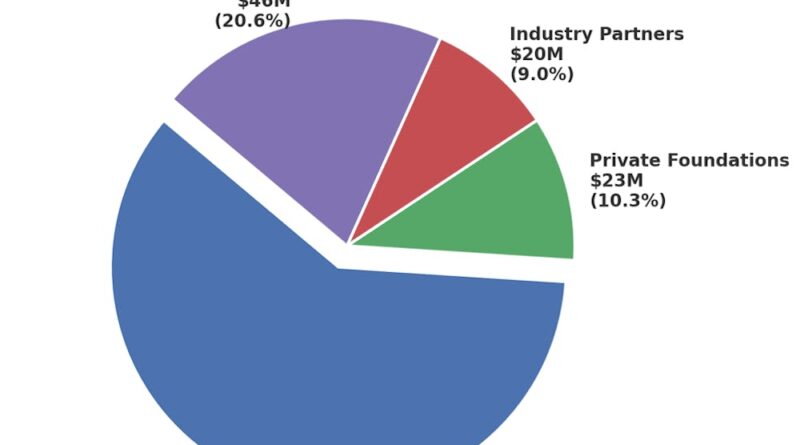Imminent Federal Government Shutdown Looms as Fiscal Year Begins
The likelihood of an imminent federal government shutdown seems highly probable. Coinciding with the commencement of the new fiscal year on October 1, authorization for the government to spend will cease. Democrats, who hold crucial votes for the passage of any spending bill, have declined to support anything that continues to enable President Donald Trump’s extensive reduction in healthcare expenditure.
Predictive market analytics are currently suggesting there is a 77% chance, or greater, that the shutdown will commence immediately. This eventuality has been on the horizon for some time. The Republican party, with Trump at the helm, has kept a firm stance on their desire to implement spending cuts across the board. Such cuts will lead to the loss of thousands of long-term employment positions.
Many government programs will witness a reduction in funding, with some even being completely cut off. Among these are foreign aid initiatives, scientific research projects, and crucial food and medical assistance programs. Democrats have found themselves largely incapable of halting or even slowing these sweeping changes thus far.
Negotiating efforts appear to be almost non-existent, with aggressive communication being the standard protocol. The only face-to-face discussion between Trump and the Democratic Congressional leaders about the budget took place earlier this week. Following the meeting, Trump promptly posted a video on his Truth Social platform, wherein he seemed to be ridiculing Senator Chuck Schumer and Representative Hakeem Jeffries.
In a statement last week, Trump referred to the Democrats as ‘crazy’ and suggested he was willing to let the government shutdown if necessary. His unusual comment about the Democrats pushing a ‘transgender for everybody’ agenda left many puzzled. The eventual consequences for the business sector remain uncertain, merely contributing to the unpredictable ride that 2025 has become.
Last week, the President’s Office of Management and Budget disseminated directives for all departments to create plans for large-scale layoffs in the event of government shutdown. The specifics, such as who specifically would lose their jobs and the permanency of such layoffs, remain undefined. Similarly, the potential impact on government services is also uncertain.
Essential departments such as Defense, Homeland Security, and the Federal Aviation Administration will continue working though employees may not receive payment until the shutdown concludes. With potential shutdowns of national park and museum services, and possible delays in air and rail travel if ‘essential employees’ call in sick, the economic loss could surpass $1 billion weekly.
On Tuesday afternoon, the market registered a marginal drop, a seemingly small fraction of a percent. Yet this fine detail points towards all parties bracing for a potentially long-lasting stalemate. The record for the longest federal government shutdown stands at 35 days, a milestone achieved during Trump’s first term in 2018 when he insisted on securing funding for his proposed border wall.
Meanwhile, economic indicators paint a bleak picture even if the threat of a federal government shutdown is disregarded. Statistics from the Bureau of Economic Analysis affirm that inflation remained steady at 2.9% in August, marking the 54th consecutive month of exceeding the Federal Reserve’s optimal inflation rate of 2%. Consumer spending rose by 0.4%, a decrease in growth rate from July’s figure of 0.5%.
Although the economy seems to have weathered the storms brought about by tariffs quite well, the numbers do not translate into optimistic sentiments among consumers. A survey conducted by The Economist and YouGov reported that a substantial portion, over two-thirds, of American respondents felt the economy is either in a fair or poor state.
The outlook gets grimmer with over half of these respondents harboring the belief that the economy is on a downward trajectory. The University of Michigan’s consumer sentiment survey, an economic outlook index, registered a rating of 55.1, a precipitous fall of 21.4% from the same time the previous year.
The Conference Board’s confidence index also noted a drop to the lowest point since April, standing at 94.2. These record-breaking lows are not isolated incidents. The Conference Board reported the largest month-to-month decline in consumers’ views of their current financial situation since they began compiling the data in July 2022.

